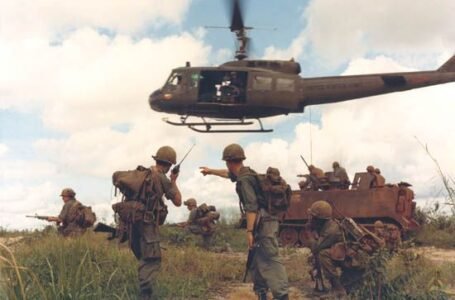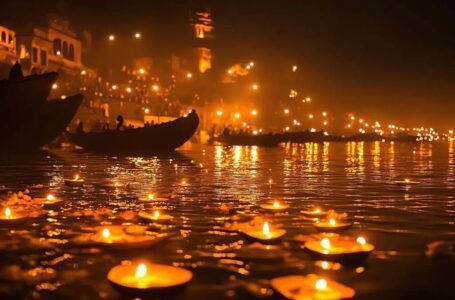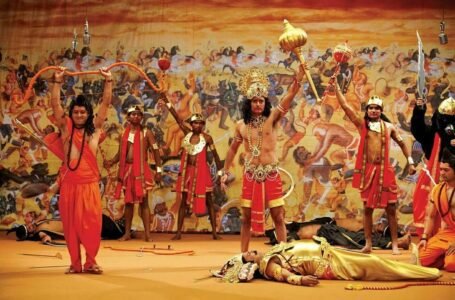The Organization of the Indian Army: Commands, Corps, Divisions & Regiments & their Explanations

-Arushi Kastwar
The Indian Army is the world’s third-largest military force with active personnel of more than 1.2 million and reserve personnel of over 960,000. Being the Indian Armed Forces’ land-based branch, its role is not restricted to border protection but includes counter-insurgency operations, disaster relief, and United Nations peacekeeping assignments. In order to execute this diverse range of duties with accuracy and efficiency, the Indian Army trusts a well-defined hierarchy. Not only does this defined command and control system assure operational effectiveness but also allows for quick and collective response in both war and peace times.
Indian Army’s Organizational Hierarchy
Total Strength & Divisions– The Indian Army has more than 1.2 million active-duty personnel, complemented by a large reserve force and the Territorial Army. Such a massive manpower is distributed among different commands, corps, divisions, brigades, and battalions. Each organizational level has a specific function in the operational and tactical effectiveness of the army.
Chain of Command – The President of India heads the Indian Army, holding the position of Supreme Commander of the Armed Forces at the apex. Operational command, however, is wielded by the Chief of Army Staff (COAS), a four-star general in charge of the planning and conduct of army operations. Reporting to him are Vice Chiefs, Army Commanders, Corps Commanders, Division Commanders, Brigade Commanders, Battalion Commanders, and Company Commanders, each having a separate echelon of responsibility.
Army Commands
India is geographically split into seven operational commands, with each commanded by a General Officer Commanding-in-Chief (GOC-in-C) who is a Lieutenant General. The commands are area-specific and have specific roles to play in the protection of national security.
Northern Command (Udhampur): It looks after the sensitive Jammu & Kashmir area and deals with the Line of Control (LoC) with Pakistan.
Western Command (Chandimandir): It deals with the Punjab and Rajasthan sector on the Pakistan border.
Eastern Command (Kolkata): Guards the borders with China, Bhutan, and Myanmar in the northeast.
Southern Command (Pune): Commands the peninsular region and key maritime areas.
Central Command (Lucknow): Serves as a reinforcement reserve and training.
South Western Command (Jaipur): Commands the desert sector on the west.
Army Training Command – ARTRAC (Shimla): Commands training doctrine and professional military education.
Every command has its own specific challenges and operational mandates according to geography and perception of strategic threat.
Corps: Strike, Holding, and Mixed
A Corps is the Indian Army’s largest field formation and consists of 3 to 4 divisions typically. A Corps is commanded by a Lieutenant General.
Types of Corps:
Strike Corps: They are offensive forces for deep penetration into enemy territory. Some prominent strike corps are:
I Corps (Mathura)
II Corps (Ambala)
XXI Corps (Bhopal)
Holding Corps: Defensive in nature, these corps are responsible for holding key positions and hindering enemy movements. Examples:
IX Corps (Yol)
X Corps (Bhatinda)
Mixed Corps: A blend of the characteristics of both strike and holding corps, these formations are versatile and suitable for different combat scenarios.
Prominent Corps:
XIV Corps (Leh): Works in high-altitude war areas, particularly in Ladakh.
IV Corps (Tezpur): Secures the eastern border with China in Arunachal Pradesh.
XXI Corps (Bhopal): India’s single desert strike corps.
Divisions: Infantry, Armoured, Artillery, etc.
A Division usually consists of 3 Brigades and is headed by a Major General. Divisions are classified according to their operational functions.
Types of Divisions:
Infantry Divisions:
Regular Infantry: Adaptable units trained for various types of terrain.
Mountain Divisions: Expert in high-altitude and mountain warfare.
Rifle Divisions: Specialized units such as the Assam Rifles, assisting n internal security.
Example: 8th Mountain Division, engaged in counter-insurgency operations in Jammu & Kashmir.
Armoured Divisions:
Armed with main battle tanks and optimized for quick offensive action.
Example: 1st Armoured Division (Black Elephant Division), based in Patiala.
Artillery Divisions:
Responsible for delivering firepower support in the form of guns, rockets, and missiles.
Employ weapons like the Pinaka multi-barrel rocket launcher.
Mechanised Divisions:
Employ infantry combat vehicles and tanks for quick maneuverability during combat.
Central to modern combined arms warfare.
Example:
4th Infantry Division (Red Eagle Division): Contributed significantly towards the 1965 and 1971 wars.
Brigades & Regiments
Brigades – A Brigade consists of 3 Battalions and supporting elements like artillery, engineers, and signals. Led by a Brigadier, brigades serve as operational formations for tactical tasks.
Regiments – Indian Army has a regimental system promoting camaraderie, tradition, and identity. Regiments are classified according to operational roles.
Infantry Regiments: Made up of various battalions.
Famous examples: Punjab Regiment, Rajput Regiment, Gorkha Rifles.
Armoured Regiments: Specialized in tank warfare.
Examples: 63 Cavalry, The Deccan Horse.
Artillery Regiments: Supply long-range firepower.
Organized under the Regiment of Artillery, with sub-units specializing in rockets, missiles, and field guns.
Battalions & Companies
A Battalion is the main combat unit, comprising about 800-1,000 soldiers, and is led by a Colonel. Each battalion is further divided into Companies, led by Majors or Captains.
Support Arms & Services
In addition to combat forces, the Indian Army is supplemented by a number of arms and services that facilitate hassle-free functioning.
Corps of Engineers: Build bridges, detonate mines, and construct infrastructure.
Signals Corps: Regulate battlefield communications and electronic warfare.
Army Medical Corps: Deliver medical treatment and evacuation.
Army Service Corps: Undertake logistics, rations, fuel, and transport.
Ordnance Corps: Regulate ammunition and equipment supply.
Army Air Defence: Defend against air attacks employing missile systems and anti-aircraft guns.
These support arms play a vital role in improving the combat effectiveness and sustainability of frontline units.
Conclusion
The complex organizational setup of the Indian Army is a reflection of its operational readiness and strategic thinking. From the commanding heights to the lowest tactical level, each and every part of the army has a specified role that makes a contribution to the overall defense mechanism. The tiered and regimented setup makes the army operational in a wide range of terrain and in intricate situations.
Relative to the world as a whole, the Indian Army’s organization is both strong and adaptable, permitting it to gear up rapidly with the evolving dimensions of warfare. The regiment system, distinctive in nurturing long-entrenched tradition and loyalty, introduces a touch of humanity in the otherwise mechanical war machinery.
Grasping this framework not only speaks to India’s military might but also to the discipline, tradition, and unity that unites its troops. Defending borders, conducting peacekeeping operations, or battling natural disasters, the Indian Army is always a rock of strength—well-trained, combat-ready, and highly regarded.


